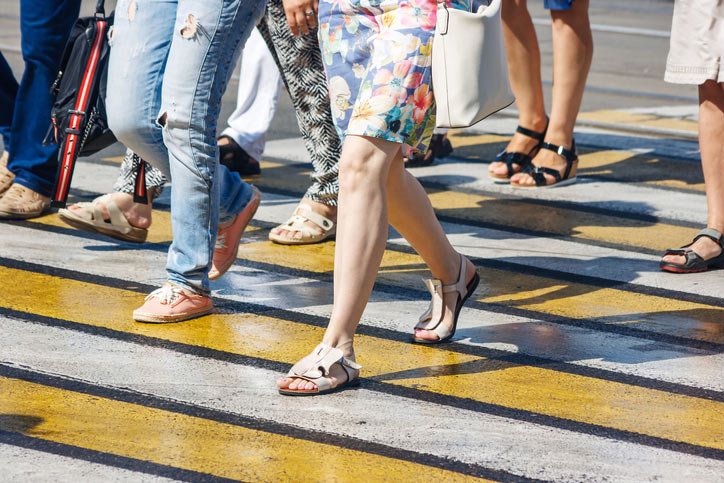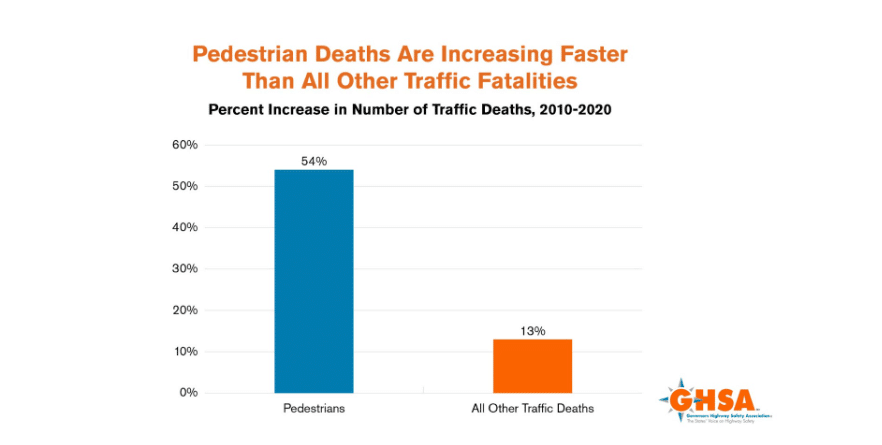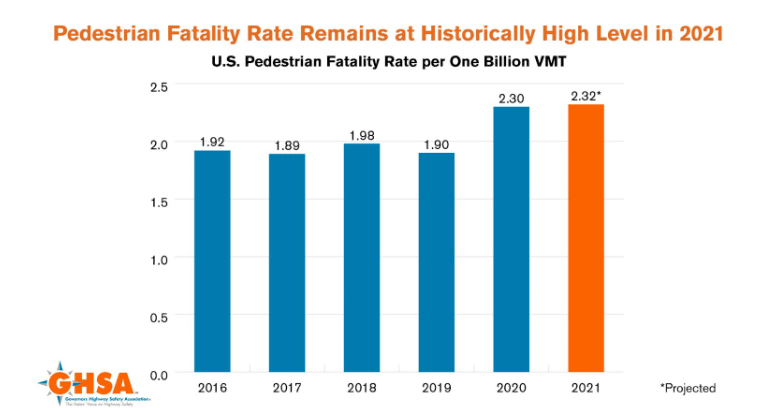Car crashes are not the only type of accidents that happen on the road. Pedestrian accidents occur more often than you might think, especially in crowded intersections and streets with heavy foot traffic. Without anything to protect them, pedestrians are particularly at risk for serious injuries when hit by a car or other type of motor vehicle.
To protect pedestrians from careless drivers or their own negligence, Florida has laws in place to ensure those who are most vulnerable can avoid catastrophic or even fatal accidents. Our Tampa pedestrian accident lawyers share what you need to know about Florida pedestrian traffic regulations.
Who Is Considered a Pedestrian in Florida?
In Florida, a pedestrian is anyone traveling on foot, in a wheelchair, using rollerblades or skates, or on a skateboard. However, a bicyclist is not considered a pedestrian and has a different set of laws they must follow while on the road. Pedestrian traffic laws do not apply to individuals riding a bicycle, although there are some overlapping rules in pedestrian and bicycle laws in Florida.
What are florida pedestrian laws?
Florida law 316.130¹ lists the road rules for pedestrian traffic regulations. The rules apply to all pedestrians, whether or not they have a driver’s license. The rules require pedestrians to observe red lights and walk signals. There are also rules for when drivers must stop for pedestrians in a crosswalk. Florida law 316.130 lists actions that are against Florida law when it comes to pedestrians and motor vehicle traffic.
1. Following Traffic Control Signals Is Mandatory for Pedestrians
Florida law 316.130(1) says that pedestrians must obey traffic control devices that apply to pedestrians. That means a pedestrian must stop when a traffic signal indicates for them to do so. The rules apply to all intersections.
If there’s a police officer present that gives a different instruction, the pedestrian must follow the police officer’s command. However, the general rule from Florida law 316.130(1) is that a pedestrian must obey walk signals and other pedestrian traffic signs at all times.
2. Pedestrians Must Use the Sidewalks
Florida law 316.130(3) requires pedestrians to use sidewalks whenever they are available. If there’s a sidewalk, it’s against Florida law 316.130(3) for a pedestrian to walk in the street. The law says that there may be exceptions, so there can be some situations that still require a pedestrian to walk in the road, like in an emergency or when the sidewalk is inaccessible because of construction.
3. Walking on the Road Rules If There Are No Sidewalks
If there are no sidewalks by a road or highway, Florida law 316.130(4) specifies that pedestrians may walk by the side of the road. In all circumstances, pedestrians must walk on the shoulder of the road. However, they must walk against the flow of traffic, on the left side of the road as far away from the cars as possible.
Like the rule for walking on the sidewalks, Florida law 316.130(4) creates an exception for when it’s not practical to comply with the requirements of the law.
4. Soliciting Is Prohibited in Paved Roadway
Florida law 316.130(5) prohibits a pedestrian from soliciting in a roadway that is paved and used for vehicular traffic. The law states that people can’t solicit rides, a job, or business from any person in a vehicle. Similarly, Florida law 316.130(6) prohibits standing on a street to guard a parked car or guide a vehicle that’s about to park.
5. Drivers Must Stop for Pedestrians in a Crosswalk
Florida statute 316.130(7) requires drivers to stop for pedestrians who are in a crosswalk with a walk signal. Pedestrians may only cross when the traffic signal instructs them to do so. Any time that a pedestrian is lawfully in the crosswalk, the vehicle driver can’t get so close that they’re a danger to the pedestrian. Florida law 316.130(7) prohibits interfering with a pedestrian lawfully in the crosswalk.
If there are no traffic control signals or signs, the driver must yield to a pedestrian in the crosswalk. A pedestrian must use a tunnel or overhead crossing rather than obstruct traffic wherever these walkways exist. Pedestrians don’t have the right of way if there’s a tunnel or overhead crosswalk.
6. Running Into Traffic Is Prohibited
Florida law 316.130(8) prohibits a pedestrian from running into traffic. A pedestrian may not leave the curb or other places away from traffic to run into the lane of travel. The driver must have enough space to travel without having to yield to the pedestrian. In addition, Florida law 316.130(9) makes it illegal for a vehicle to overtake another vehicle that is stopped for pedestrians in a crosswalk.
7. Pedestrian Must Yield to Traffic in Crosswalk
Even though a pedestrian has the right of way in a crosswalk, they must still wait until the coast is clear before entering the path of travel. When there is traffic already in the crosswalk, the pedestrian must yield the right of way to that vehicle. Florida law 316.130(10) gives traffic already in the crosswalk the right of way.
8. Using Crosswalks and the Shortest Lane of Travel
Florida law 316.130(11) says that, when there are working crosswalks with traffic control signals, all pedestrians must cross only in the crosswalk. When there are no marked crosswalks, Florida law 316.130(12) requires a pedestrian to cross using the shortest route possible.
The law says that the pedestrian has to walk at right angles perpendicular to the road to cross the road in the shortest distance possible. Florida law 316.130(13) requires pedestrians to use the right side of the crosswalk as much as possible to make room for people moving in the opposite direction. Florida law 316.130(14) says that crossing an intersection diagonally is not allowed unless there is a special traffic control device for that purpose.
9. Due Care and Caution Towards Pedestrians Is Required
Florida law 316.130(15) instructs drivers to use due care and caution at all times to avoid colliding with pedestrians. The law calls for special care when there are children or incapacitated persons present. Florida law 316.130(15) calls for general care at all times for vehicle drivers when it comes to the safety of pedestrians.
10. Violation of Pedestrian Traffic Laws Is a Non-Criminal Infraction
According to Florida law 316.130(19), it is a noncriminal traffic infraction to violate Florida’s pedestrian laws. A driver may also face charges of reckless driving², depending on the circumstances. In general, a ticket for a pedestrian traffic violation is a noncriminal traffic infraction.
Does a pedestrian always have the right of way in Florida?
While pedestrians have the right-of-way when in a marked crosswalk and following traffic signs and signals, they do not always have the right-of-way. In fact, Florida law states that both pedestrians and drivers have a duty to avoid accidents and must yield to one another based on the rules. The party who yields the right-of-way will vary depending on the situation.
What Is considered jaywalking in Florida?
Jaywalking is not a legal term and is not addressed as such in any Florida statutes. The term “jaywalking” generally refers to crossing a street outside of a marked crosswalk or designated intersection. It could also mean when a person is crossing the street even though the light is red or clearly signals to the pedestrian to not to walk at that time.
Do You have to walk your bike across a crosswalk in Florida?
According to Florida Statute 316.2065 (9)³, a bicyclist or person on any other vehicle that is propelled by human power in a crosswalk has the same rights and duties as a pedestrian under those circumstances. Unless there is a local ordinance against it, you can legally ride your bicycle on sidewalks and through crosswalks in Florida.
How common are pedestrian accidents?
Unfortunately, pedestrian accidents are common in Florida and often have tragic results for victims. According to recent reports from the Governors Highway Safety Association (GHSA)⁴, pedestrian accident fatalities increased by 31% in Florida in the first half of 2021. This trend follows the overall increase in pedestrian deaths in the United States.
(Source: https://www.ghsa.org/resources/Pedestrians22)
ABC Action News⁵ also reports that Florida had the second-highest number of pedestrian deaths in the United States at 444 pedestrian fatalities in the first half of 2021, just behind California. However, Florida did have the biggest difference between 2020 pedestrian fatalities and 2021 reported deaths.
(Source: https://www.ghsa.org/resources/Pedestrians22)
Who is at fault for accidents involving pedestrians?
Who is at fault for a Florida pedestrian accident depends on the circumstances. Florida is a comparative negligence state, which means that the driver and the pedestrian are both considered when determining fault after an accident. If there is a legal case, the jury will decide the percentage of fault assigned to each party.
Florida’s right-of-way law often helps pedestrian accident victims claim compensation after they’ve been hit by a car. Even if a pedestrian was jaywalking when they were hit, it’s possible to prove that the driver that struck the victim was partially at-fault or fully at fault for the accident.
If you were hurt by a driver on the road, you may qualify to bring a legal claim for compensation, even if you are partially to blame for the accident. Speak with an experienced pedestrian accident lawyer to see if you have a case and what your claim may be worth based on your injuries and suffering.
What are the most common causes of pedestrian accidents?
According to the Centers for Disease Control and Prevention (CDC)⁶, some of the major risk factors that can lead to pedestrian accidents are:
- Alcohol
- Speeding
- Location
The CDC reports that alcohol consumption was involved in 46% of pedestrian crash fatalities in 2019. Also, vehicles traveling at higher speeds were more likely to be involved in a pedestrian accident that caused severe injuries or death. Lastly, the majority of pedestrian deaths happened in areas with a higher population in urban areas or on roadways with no intersections at night.
There are also demographic factors that can affect the likelihood of becoming a pedestrian crash victim. Adults over the age of 65 and children under the age of 15 were most at risk of being involved in a pedestrian accident with fatal consequences.
What should I do if I am hurt in a pedestrian accident?
After a pedestrian accident, it can be a difficult time for victims and their families. Injuries can be painful and may prevent you from working while you recover. It’s also confusing to know what to do immediately following the accident.
Here are steps to take after a pedestrian accident to ensure you get the help you need and are in the best position to file a legal claim against the responsible party:
- Move to a safe place away from traffic. The most important thing to do after the accident is to move away from traffic and other dangers on the road. If possible, find a safe place to move where you can seek medical aid and exchange information with the other people involved in the accident.
- Get medical care right away. If you or anybody else is hurt after the accident, it’s crucial to seek emergency care as soon as possible. Not only does this ensure your injuries are handled quickly, but it also documents those injuries and connects them directly to the accident.
- Call the police. If the police were not already alerted by a witness or other person involved in the accident, call the police and wait for them at the scene. You can make an official report and document what happened. However, you should always prioritize your safety and health. Call for emergency services before the police if you were hurt.
- Exchange information with the other involved parties. If you are able and alert, exchange your contact information with the other parties involved, including names, phone numbers, insurance information, and email addresses.
- Be careful what you say. While it’s necessary to exchange information with others after an accident, you should also be careful about what you say to them. It’s important to avoid expressing guilt or admitting fault for the accident. These statements may come into play if you choose to pursue legal actions against the responsible party.
- Collect evidence from the accident scene. If you can, try to gather some evidence and capture details of what happened at the accident scene. Take pictures of the crosswalk or area where the accident occurred and what may have led to it. Also, try to get contact information from witnesses who can help determine what happened.
- Keep all documentation organized. In the days and weeks after your accident, it’s important that you keep all documentation from the incident. This includes copies of police reports, medical bills, documents related to your treatment, and anything else connected to the accident.
- Speak to a pedestrian accident attorney. If you’re dealing with unfair treatment from the insurance company, contact a pedestrian accident lawyer. They can help you get the maximum compensation you need and deserve after being hurt in a pedestrian accident.
What are helpful safety tips for pedestrians?
To help you stay safe as a pedestrian in Florida, here are some essential pedestrian safety tips:
- Always obey all traffic signs and signals.
- Use sidewalks whenever they are available.
- When there is no sidewalk, stay as far away from cars as possible and walk facing traffic.
- Only use crosswalks or designated intersections when crossing the street.
- Watch out for traffic from all directions before stepping into the road.
- Locate a well-lit area to cross the street if no crosswalk is available.
- Keep watching for cars that may be backing up from a driveway or parking space.
- Be aware that alcohol or drugs can impair your judgment and ability to gauge vehicle speed or distances.
Check out more driving safety topics and tips from the National Highway Traffic Safety Administration (NHTSA)⁷ to avoid dangerous situations involving pedestrians.
Can pedestrians legally sue someone for hitting them?
When a pedestrian accident is the driver’s fault, the accident victim can bring a legal claim against the driver to recover for their losses, including economic and non-economic damages. If the driver was negligent and did not take reasonable care to prevent the accident from occurring, the pedestrian may qualify to sue the driver.
If you’re unsure if you have a valid legal claim, contact our team of Tampa personal injury lawyers to schedule a free consultation on your case. We can help determine who is at fault for the accident and if you stand to recover compensation for your damages. We can help you get fair financial payment from the insurance company and ensure the responsible party is held accountable.
How long does it take to settle a pedestrian accident?
The time it takes to reach a settlement for a pedestrian accident claim can vary significantly based on the circumstances of the accident. In general, settling a pedestrian accident claim can take anywhere from a few weeks to several months and even years if the case is particularly complex.
Some of the factors that can impact how long it takes to settle your claim include:
- The severity of your injuries
- How many parties are involved in the accident
- How long it takes to reach the maximum level of medical improvement
- Negotiations with the insurance companies
- Whether the case goes to trial or not
- If you have a lawyer who understands the legal process
Claiming compensation after a pedestrian accident can be a complicated process that involves several steps and legal knowledge for the most successful results. When victims miss a step or inadvertently make a mistake, it often delays the process, leaving them with unpaid medical bills and prolonged suffering. Working with a skilled lawyer can help you get the help you need now as quickly as possible.
Can you sue someone for almost hitting you with their car?
No, pedestrians cannot take legal action against a driver who almost hit them. To file a personal injury claim and win, you must prove all the elements of negligence, including:
- The presence of a legal duty
- There was a breach of duty
- This breach caused the accident
- The accident resulted in damages to the victim
When an accident almost happens, there are no actual damages to prove negligence. Common types of damages that could lead to a legal claim are medical costs, lost income, and pain and suffering. When you do not have all these elements, any injury claim will be unsuccessful.
How can a pedestrian accident attorney help?
If you’ve been injured in a pedestrian accident, your life may have changed in an instant. You need strong legal representation to ensure you get fair treatment and maximum compensation for your injuries and suffering. A pedestrian accident lawyer understands the legal process and what needs to happen to make your case a success.
Have you been in a Florida pedestrian accident? Contact the best pedestrian accident lawyers to talk about your case. There is no fee unless you win. Let us help you hold the responsible party accountable and fight for the compensation you deserve.
Sources:
³FLA. STAT. § 316.2065 (9) (2021)
⁴Governors Highway Safety Association (GHSA). Pedestrian Traffic Fatalities by State: 2021 Preliminary Data. Retrieved 27 June 2022.
⁵Mills, C. (15 April 2022). Florida ranks 2nd for pedestrian deaths in US for part of 2021; local group advocates for solutions. ABC Action News WFTS Tampa Bay. Retrieved 27 June 2022.
⁶Centers for Disease Control and Prevention (CDC). (13 May 2022). Pedestrian Safety. Retrieved 27 June 2022.
⁷National Highway Traffic Safety Administration (NHTSA). Pedestrian Safety. Retrieved 27 June 2022.



